26 Artisan Northern European Cookies to Savor
Artisan Northern European cookies represent a delightful culinary tradition that goes beyond mere sweet treats.
Generations of bakers have carefully crafted these delectable delights with passion and precision.
Skilled hands knead, shape, and bake these confections using time-honored techniques passed down through families.
Regional ingredients play a crucial role in creating unique flavor profiles that tantalize taste buds.
Each cookie tells a story of cultural heritage, blending local traditions with remarkable baking expertise.
The textures range from delicate and crumbly to rich and substantial, offering something for every palate.
Nordic and Scandinavian regions especially shine in their remarkable cookie-making traditions.
Prepare to indulge in these 26 exceptional artisan Northern European cookies that will transport you to a world of sweet, authentic delight:
Artisan Northern European Cookies for Every Occasion
Cookie baking in Northern Europe is an art form, mixing buttery doughs, warming spices, and festive decorations. Enjoy crisp, sweet, and sometimes nutty treats for every season.
Danish Cookies (Smakager)
Smakager are traditional Danish cookies that represent a delightful blend of sweet flavors and cultural heritage.
Danish bakers craft these cookies using wheat flour and creative ingredients like chocolate, marzipan, dry fruits, and nuts.
Family recipes and industrial production both contribute to their widespread popularity across Denmark.
Christmas celebrations especially highlight smakager as a cherished seasonal treat.
Round metal tins filled with these cookies frequently serve as popular holiday gifts.
Different varieties showcase unique shapes and textures that reflect regional baking traditions.
Nutty and sweet variations appeal to diverse taste preferences.
Kammerjunker
Kammerjunker are crispy Danish double-baked cookies originating from traditional Danish cuisine.
Wheat flour and butter form the core ingredients of these small, compact treats.
Bakers roll the initial dough into a log, bake it, then slice and rebake until achieving a satisfying crunch.
Cardamom, vanilla, and lemon zest provide subtle flavor complexity to these cookies.
Most Danes enjoy kammerjunker as an accompaniment to koldskal, a cold buttermilk dessert.
Their light texture and mild sweetness make them perfect for summer snacking.
Small in size but rich in traditional Danish baking technique, these cookies offer a simple yet delightful taste experience.
Generations of Danish families have enjoyed kammerjunker as a classic afternoon treat.
Vaniljekranse
Vaniljekranse are classic Danish Christmas cookies boasting a rich buttery texture with ground almonds that create an irresistibly crisp crunch.
Danish families traditionally bake these vanilla-infused circular cookies during December holiday celebrations.
Home bakers carefully extrude the delicate dough into small ring shapes before baking them to golden perfection.
Ground almonds provide extra texture and a subtle nutty flavor that complements the sweet vanilla undertones.
Generations of Danish families have passed down this simple yet beloved recipe from grandparents to children.
These cookies serve as popular gifts and festive treats during Christmas gatherings.
Each cookie represents a delicate balance between buttery richness and light vanilla essence.
Small, circular, and elegantly simple, vaniljekranse embody traditional Danish holiday baking at its finest.
Krumkake
Krumkake are delicate Norwegian wafer cookies celebrated for their intricate pressed designs and light, crispy texture.
Norwegian bakers craft these festive treats using a special griddle that imprints decorative patterns onto thin, fragile wafers.
Traditional ingredients include eggs, sugar, vanilla, flour, cardamom, and butter, which combine to create a delicate batter.
Christmas celebrations across Scandinavia feature these elegant cookies as a sweet seasonal staple.
Families roll the warm wafers into cone shapes immediately after baking to maintain their signature curved form.
Whipped cream often fills the crisp cookie shells before a light dusting of powdered sugar completes the dessert.
Generations have passed down krumkake-making techniques, preserving this beloved Nordic culinary tradition.
Scandinavian bakeries and home kitchens continue to prepare these beautiful, crisp cookies during winter festivities.
Jdekager
Jodekager are classic Danish Christmas cookies with a rich historical legacy originating from Jewish bakeries in the 1700s.
Danish families cherish these crispy, buttery treats made from simple ingredients like flour, sugar, butter, and eggs.
Bakers carefully brush the cookies with eggwash before generously sprinkling a sweet mixture of chopped almonds, sugar, and cinnamon on top.
Holiday tables across Denmark always feature these traditional cookies as an essential Christmas dessert.
European baking traditions influenced their creation, highlighting the cultural exchange between Jewish and Danish communities.
Almonds provide a delightful crunch that complements the cookie's delicate texture.
Generations have passed down the recipe, ensuring its continued popularity during festive seasons.
Warm spices and buttery base make these cookies an irresistible seasonal indulgence.
Hallongrotta
Hallongrotta are traditional Swedish butter cookies featuring a delightful raspberry jam center pressed into a soft, crumbly base.
Swedish bakers have crafted these sweet treats since the 1800s, creating small cookies with a distinctive thumb-pressed indentation filled with bright red raspberry preserves.
Classic ingredients include butter, flour, sugar, vanilla, and baking powder, which combine to create a rich, tender cookie.
Kafferep gatherings often showcase these cookies as a beloved dessert alongside hot beverages.
Scandinavian families pass down recipes through generations, maintaining the cookie's simple yet elegant design.
Americans recognize these treats as thumbprint cookies, appreciating their charming appearance and sweet-tart flavor profile.
Home bakers enjoy making hallongrotta for special occasions and casual coffee breaks.
These small cookies pair perfectly with tea, coffee, or milk, offering a quick burst of sweet satisfaction.
Danish Pepper Cookies (Peberndder)
Pebernødder cookies are Denmark's iconic Christmas spice cookies that burst with complex flavors from multiple traditional spices like cardamom, cinnamon, nutmeg, ginger, clove, and white pepper.
Danish families have prepared these small, crispy light brown cookies for generations during holiday celebrations.
Historical records suggest these treats date back to the 1500s as a beloved seasonal tradition.
Each cookie delivers a rich, warm spice profile that perfectly complements coffee or tea.
Generations of Danish households consider pebernødder an essential part of Christmas festivities.
Bakers create these cookies with simple ingredients and straightforward techniques.
Home baking remains the most common method of preparation.
Danes enjoy these cookies throughout December and early January as a festive seasonal treat.
Swedish Oatmeal Balls (Chokladbollar)
Chokladbollar are beloved Swedish no-bake chocolate treats bursting with rich cocoa flavor and simple ingredients.
Swedish households have cherished these quick desserts for generations, mixing oats, sugar, cocoa powder, and butter into an easy-to-prepare mixture.
Refrigeration helps these small spheres hold their shape before rolling in coconut flakes, sprinkles, or pearl sugar for extra texture and visual appeal.
Coffee or arrack can be added to create unique flavor variations that make each batch special.
Regional traditions differ slightly, with Danes connecting these treats to Christmas celebrations.
Kids and adults both enjoy making and eating chokladbollar as a quick sweet snack.
Homemade versions often reflect family recipes passed through generations.
Sweden's love for these simple chocolate balls continues to grow, making them a staple in home kitchens across the country.
Oatcakes (Havrekjeks)
Havrekjeks are classic Norwegian oatcakes bursting with rustic simplicity and traditional flavor.
Bakers craft these cookies by creaming butter with sugar and mixing oats, flour, salt, and baker's ammonia.
Milk binds the ingredients into a sticky dough that gets rolled out and cut into round shapes.
Norwegian families often serve these crisp cookies alongside geitost, a sweet goat's milk cheese that complements their hearty texture.
Baking transforms the dough into golden-brown rounds with delicate, crisp edges.
Home kitchens and bakeries across Norway have cherished these oatcakes for generations.
Salt and sugar balance the oats' earthy undertones, creating a perfect teatime companion.
Punschrulle
Punschrulle are iconic Swedish pastry rolls combining leftover cake crumbs, cocoa, and punsch liqueur wrapped in green marzipan with chocolate-dipped ends.
Swedish bakeries traditionally crafted these treats by gathering cookie fragments to create a resourceful and flavorful center.
Bakeries nicknamed them "dammsugare" or vacuum cleaner due to their cylindrical shape and innovative ingredient recycling method.
Punsch liqueur, made from arrack, neutral alcohol, sugar, and water, provides a distinctive boozy flavor to the cookie's interior.
Workers would collect scattered cake crumbs and transform them into these delicious rolls, ensuring nothing went to waste.
Each roll features a rich, chocolatey exterior with a green marzipan coating that contrasts beautifully with the dark chocolate tips.
Street vendors and bakeries across Sweden sell these popular treats as quick snacks or dessert accompaniments.
Ingefrntter
Ingefrntter are Norwegian festive spice cookies bursting with warm winter flavors and complex seasoning.
Norwegian bakers craft these traditional treats using a blend of flour, butter, sugar, fruit syrup, eggs, and distinctive spices like cinnamon, ginger, and black pepper.
Home kitchens across Norway carefully prepare these cookies by mixing ingredients into a soft dough that rests in the refrigerator before shaping.
Bakers roll the chilled dough into thin strips and form them into flattened round shapes with unique textures.
These cookies have deep cultural roots in Norwegian holiday celebrations and family gatherings.
Spicy and slightly sweet, ingefrntter offer a perfect balance of warming winter spices.
Each cookie represents generations of baking traditions passed down through Norwegian families.
Small yet packed with flavor, these cookies complement coffee or serve as a delightful afternoon snack.
Brune Pinner
Pepperkaker are traditional Norwegian Christmas cookies featuring crisp, spicy wafers that blend sweet and warming flavors.
Norwegian bakers create these thin, fragrant cookies using a rich butter dough infused with molasses and robust ground cinnamon.
Ginger and cloves often enhance the signature spice profile of these festive treats.
Home kitchens and bakeries across Norway prepare pepperkaker as essential holiday treats during Christmas celebrations.
Bakers roll the dough thin and cut intricate shapes like hearts, stars, or people before baking until golden brown.
Almonds and pearl sugar frequently decorate the finished cookies, adding delightful crunch and sweetness.
Families share these cookies with guests and enjoy them alongside coffee or mulled wine.
Generations have passed down pepperkaker recipes, making them a cherished Norwegian Christmas tradition.
Goro
Goro cookies are elegant Norwegian Christmas pastries featuring intricate iron-pressed designs that transform simple ingredients into festive delicacies.
Norwegian families traditionally prepare these delicate cookies using a blend of flour, butter, eggs, sugar, vanilla, cardamom, and heavy cream.
Bakers carefully wrap the smooth dough in plastic and refrigerate it for at least 8 hours before pressing it into decorative patterns with a special goro iron.
Each cookie gets baked directly in the ornate iron, creating beautiful embossed surfaces with unique geometric shapes.
After baking, the cookies cool on wire racks until they reach room temperature.
Goro cookies pair perfectly with hot coffee and make wonderful holiday gifts for friends and family.
Sand Cookies (Sandkaker)
Sandkaker are traditional Norwegian cookies molded in delicate sand-like shells that showcase Norway's rich baking heritage, crafted from simple ingredients like flour, butter, blanched ground almonds, sugar, and eggs.
Norwegian bakers carefully mix butter and flour until crumbly, creating a tender texture that defines these elegant treats.
Almond-enhanced dough is pressed into special small tart molds, giving sandkaker their distinctive shape and crisp edges.
Each cookie emerges with a golden-brown color and subtle nutty flavor that melts softly in you mouth.
Families often prepare these cookies during holiday seasons, especially around Christmas.
Norwegian bakeries and home kitchens consider sandkaker a cherished sweet tradition.
Germany and Scandinavian regions also enjoy similar almond-based cookie variations.
Sweet and light, these cookies pair perfectly with coffee or tea.
Sirupsnipper
Sirupsnipper are traditional Norwegian spiced diamond-shaped cookies bursting with warm aromatic flavors from cinnamon, ginger, white pepper, and aniseed.
Bakers ammonia gives these buttery pastries a unique light texture and crisp edge.
Norwegian home bakers carefully craft these cookies using sweet syrup as a key ingredient.
Each cookie is elegantly decorated with a single halved almond placed precisely in its center.
Rich butter creates a smooth, melt-in-your-mouth consistency that complements the complex spice blend.
Generations of Norwegian families have enjoyed these cookies during holiday celebrations and special gatherings.
Sirupsnipper represent a cherished Nordic baking tradition passed down through decades of cooking.
Their distinctive diamond shape and intricate spice profile make them a memorable treat in Scandinavian cuisine.
Serinakaker
Serinakaker are traditional Norwegian Christmas butter cookies deeply rooted in Nordic holiday baking culture.
These round, delicate cookies feature a simple yet elegant composition of flour, butter, and sugar with vanilla flavoring.
Norwegian families have baked serinakaker for generations, making them a cherished seasonal treat.
Almond slivers typically garnish the cookie tops, adding a subtle crunch and nutty accent.
Norwegian bakers consider serinakaker one of the oldest Christmas cookie varieties.
Seven sorts holiday baking tradition prominently features these sweet treats.
Regional variations sometimes include slight modifications to the classic recipe.
Nordic Christmas celebrations frequently showcase these classic butter cookies as a festive dessert.
Drommar
Drommar are Swedish shortbread cookies melting softly with an incredibly light, ethereal texture that dissolves instantly on your tongue.
Swedish bakers create these delicate treats using unique ingredients like butter, sugar, flour, and rare baking ammonia.
Ammonium bicarbonate gives drommar their signature cloudlike crumbly consistency.
Traditional recipes pass through generations in Nordic kitchens.
Scandinavian families often enjoy these cookies during holiday gatherings.
Subtle sweetness characterizes their simple flavor profile.
Germans sometimes call similar cookies "dream cookies" due to their extraordinary lightness.
Bakers carefully balance ingredients to achieve perfect melt-in-mouth results.
Sju Sorters Kakor
Sju sorters kakor are traditional Swedish baked goods representing a cherished cultural practice of serving multiple sweet treats during coffee gatherings.
Swedish families historically prepared seven different cookies as a mark of hospitality, with guests expecting a diverse selection of baked delicacies like drommar, hallongrotta, and brysselkex.
Originating generations ago, this custom signaled a host's preparedness and social grace during fika, Sweden's beloved coffee break ritual.
Offering fewer than seven varieties could be considered impolite or inadequate in social settings.
Modern interpretations have expanded the concept beyond strict cookie counts to include various pastries and cakes.
Generations have maintained this delightful tradition as a way to welcome and honor guests.
Regional variations and family recipes contribute to the rich diversity of sju sorters kakor.
Swedish families continue to embrace this sweet cultural practice during social gatherings and celebrations.
Rosettbakkels
Rosettbakkels are crispy Norwegian iron-molded cookies boasting intricate lace-like designs created through deep-frying delicate batter into ornate shapes.
Norwegian bakers skillfully dip special decorative metal irons into thin, sweet batter before quickly submerging them in hot oil.
Crisp and light, these cookies emerge golden-brown with intricate patterns resembling elaborate snowflakes or detailed rosettes.
Traditional holiday desserts, rosettbakkels frequently grace Christmas tables across Norway's western regions.
Sweet powdered sugar typically dusts these fragile treats, enhancing their elegant appearance.
Families pass down specialized rosette iron molds through generations, preserving cultural baking techniques.
Precise temperature control during frying ensures each cookie achieves perfect crunchiness without burning.
Mastering rosettbakkels requires patience, practice, and inherited culinary wisdom from Norwegian baking traditions.
Lace Oat Cookies (Havrekniplekaker)
Havrekniplekaker are delicate Norwegian lace cookies known for their translucent, crispy texture and rich buttery flavor.
Traditional bakers craft these cookies by melting butter and blending it with flour, oats, milk, sugar, and salt.
Skilled Norwegian home cooks spread the thin batter carefully on greased cookie sheets, ensuring each cookie has ample space to crisp and spread during baking.
Light and lacy edges characterize these authentic treats, which become golden brown and incredibly fragile when done.
Norwegian families often enjoy these cookies during afternoon coffee breaks or holiday gatherings.
Sweet and crisp, havrekniplekaker melt quickly in your mouth with a delicate crunch.
Regional variations might include adding small amounts of vanilla or cardamom for extra depth.
Norway's love for simple, elegant baked goods shines through in these beautiful thin cookies.
Seterjentas Rmmebrod
Seterjentas rmmebrod are traditional Norwegian sugar-dusted cookies known for their delicate, crisp texture and rich buttery flavor.
Norwegian farmers originally created these thin, lacy cookies as a simple treat using basic pantry ingredients like flour, sour cream, and butter.
Cardamom adds a subtle warmth and complexity to the cookie's profile.
Bakers carefully chill the dough to make rolling easier and ensure a uniform thickness.
Sugar sprinkled on the surface creates a delightful caramelized crunch when baked.
Each cookie is rolled extremely thin, allowing it to become beautifully translucent and crisp.
Traditional preparation methods have been passed down through generations of Norwegian families.
Regional variations might include slight adjustments to spice levels or ingredient proportions, reflecting local tastes and traditions.
Sand Cookies (Sandntter)
Sandntter are traditional Norwegian butter cookies known for their melt-in-your-mouth texture and rich, sweet flavor profile.
Norwegian bakers craft these delicate cookies using a precise blend of butter, potato starch flour, regular flour, sugar, vanilla sugar, eggs, and baking powder.
Softened butter gets whipped with sugar until achieving a light, fluffy consistency.
Remaining ingredients combine gradually to form a smooth, delicate dough.
Bakers typically pipe the mixture into classic curved or twisted shapes before baking.
These golden-brown cookies have a crisp exterior and tender interior that crumbles gently when bitten.
Sandntter often appear during holiday celebrations and family gatherings across Norway.
Their simple ingredients and elegant appearance make them a cherished traditional treat.
Bondkakor
Bondkakor are traditional Swedish cookies originating from rural farming communities, featuring a golden syrup-infused dough that delivers a rich caramel sweetness with nutty almond undertones.
Simple ingredients like flour, sugar, butter, and baking soda combine to create a flat, round cookie with a delicate chew and satisfying crunch.
Almonds play a key role, often scattered throughout the dough or decoratively placed on top, enhancing both texture and flavor.
Home bakers across Sweden frequently prepare these cookies as a nostalgic treat connecting them to agricultural heritage.
Regional variations might include slight tweaks to the basic recipe, reflecting local preferences.
Families typically enjoy bondkakor with coffee or tea during afternoon gatherings.
Their rustic appearance belies a complex flavor profile that balances sweetness with subtle nuttiness.
These cookies represent a humble yet beloved part of Swedish baking tradition.
Brussels Cookies (Brysselkex)
Brysselkex are classic Swedish butter cookies that melt instantly in your mouth with their rich, crumbly texture and simple elegant charm.
Swedish bakers craft these delicate treats using minimal ingredients like premium butter, sugar, and flour.
Originating from Belgium despite their Swedish name, these cookies have a smooth, golden-brown appearance that signals their rich flavor.
Bakeries across Sweden prepare brysselkex as delicate shortbread-style cookies with a subtle sweetness and crisp finish.
Families often enjoy these cookies during afternoon coffee breaks or holiday celebrations.
Traditional recipes pass through generations, maintaining the cookie's authentic buttery profile.
Regional variations might include slight tweaks in sugar content or baking techniques.
Scandinavian households consider brysselkex a cherished sweet snack that connects them to their culinary heritage.
Swedish Checkerboard Cookies (Schackrutor)
Schackrutor are classic Swedish checkerboard cookies renowned for their striking geometric design and dual-flavored composition.
Two contrasting doughs - typically vanilla and chocolate - are meticulously layered to create a precise checkered pattern mimicking a chessboard's grid.
Bakers carefully roll each colored dough into uniform squares, then stack and compress them precisely.
Swedish bakeries and home kitchens treasure these cookies as a traditional sweet treat.
Shortbread-like in texture, schackrutor offer a rich buttery flavor with balanced chocolate and vanilla notes.
Precise cutting and stacking techniques ensure each cookie displays a perfect geometric checkerboard appearance.
Cold butter and careful dough handling contribute to their signature crisp texture.
These elegant cookies serve as both a visual delight and a delicious Nordic dessert.
Mandelmusslor
Mandelmusslor are traditional Swedish butter cookies boasting a delicate almond-flavored shell with crisp, golden edges and a melt-in-your-mouth texture.
Swedish bakers carefully craft these cookies using simple ingredients like wheat flour, sugar, ground almonds, butter, and eggs.
Home kitchens often prepare these treats during holiday seasons, especially Christmas.
Metal fluted tart pans create their distinctive scalloped shape and elegant appearance.
Each cookie transforms into a light, crisp pastry with a rich buttery flavor.
Ground almonds provide a subtle nuttiness that distinguishes these cookies from other traditional Swedish sweets.
Generations have passed down this recipe, making mandelmusslor a beloved family tradition.
Serving these cookies alongside coffee or tea makes for a perfect Nordic afternoon snack.
What Are Traditional Christmas Cookies in Northern Europe?
Northern Europe boasts a delightful array of traditional Christmas cookies that vary by country but share common themes of warmth, spice, and celebration. Some beloved varieties include:
How Do Scandinavian Cookies Get Their Festive, Picture-Perfect Look?
Scandinavian cookies achieve their charming and festive appearance through several key practices:

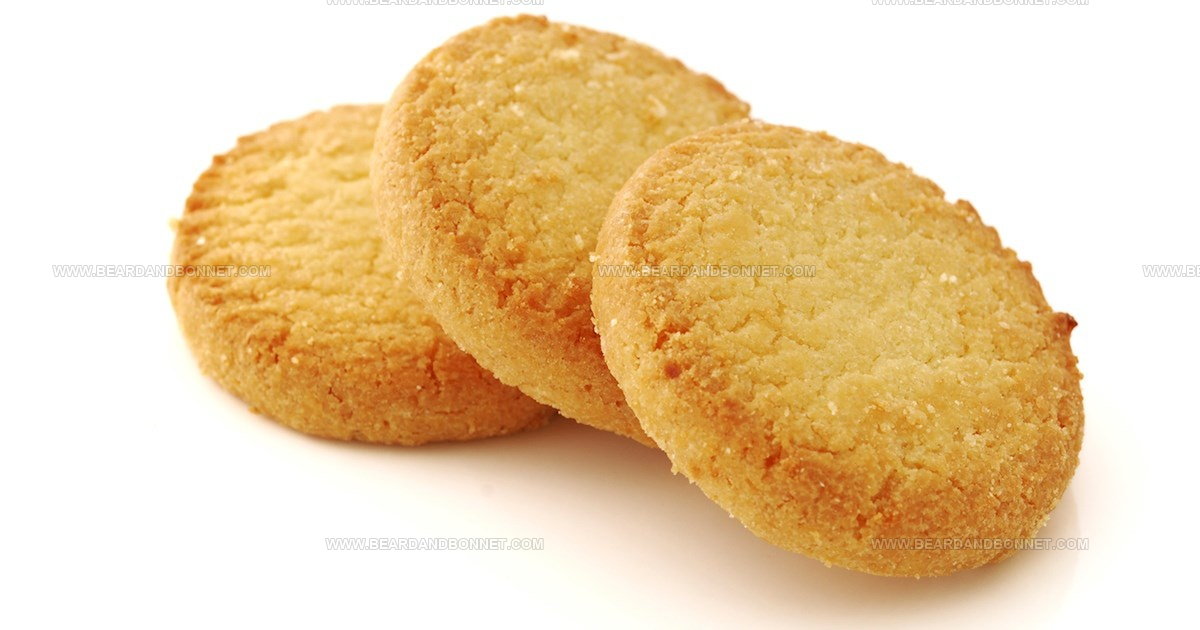
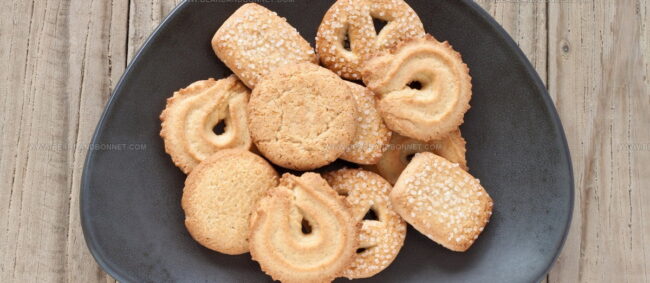
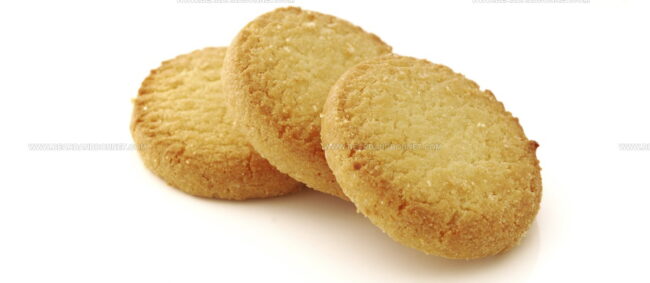
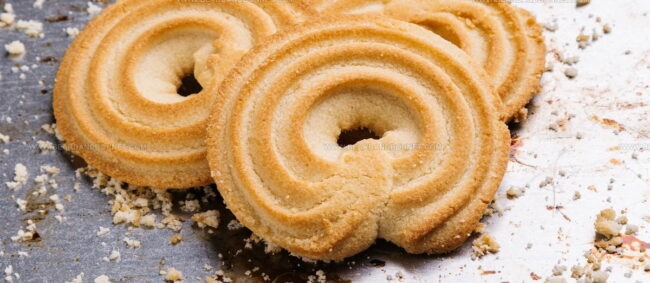
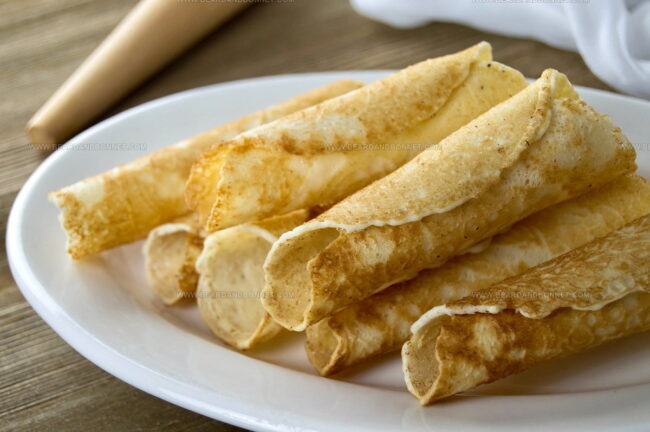
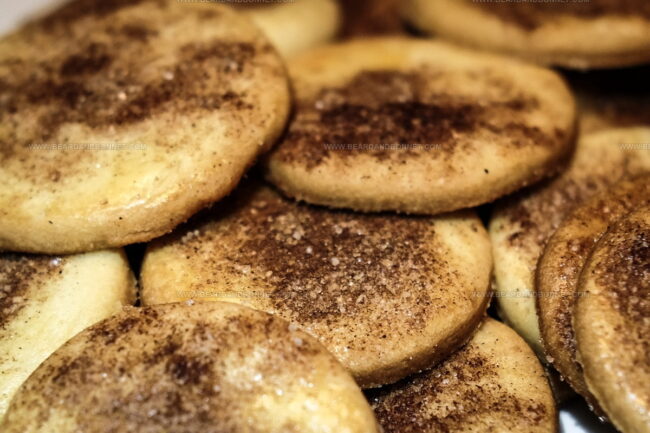
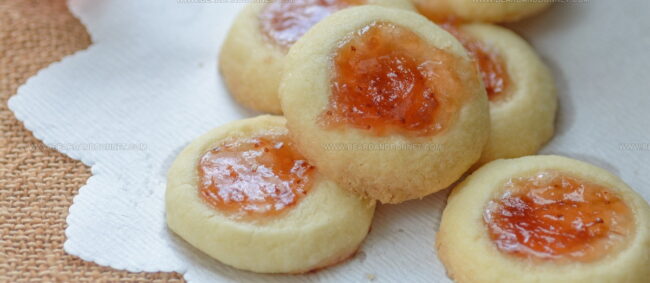
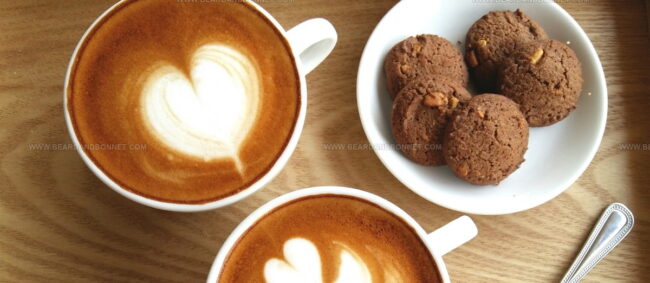
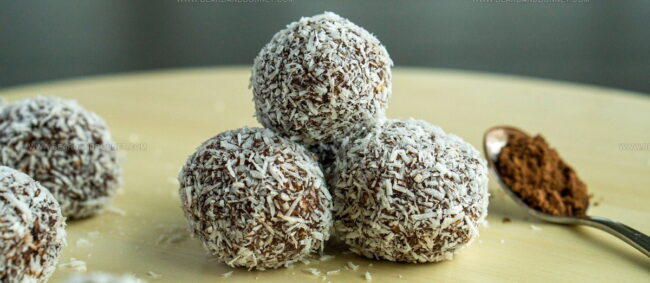
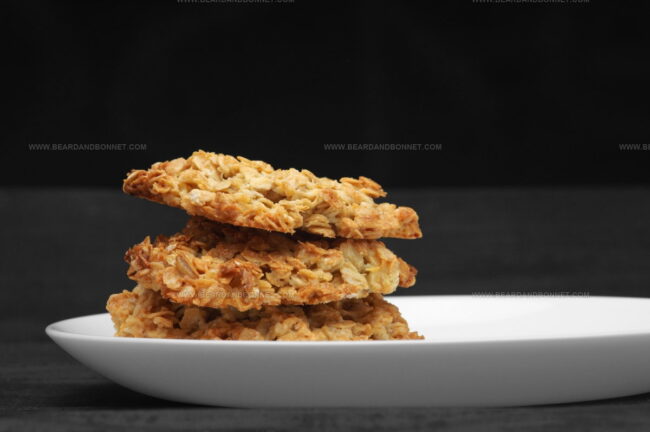
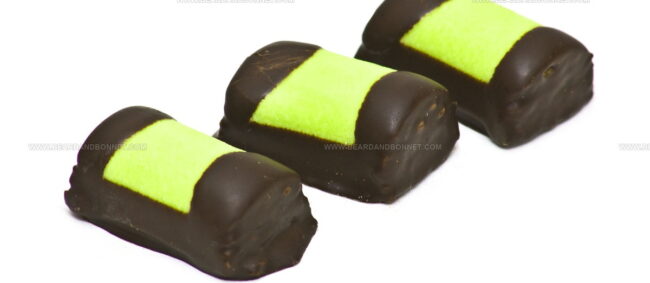
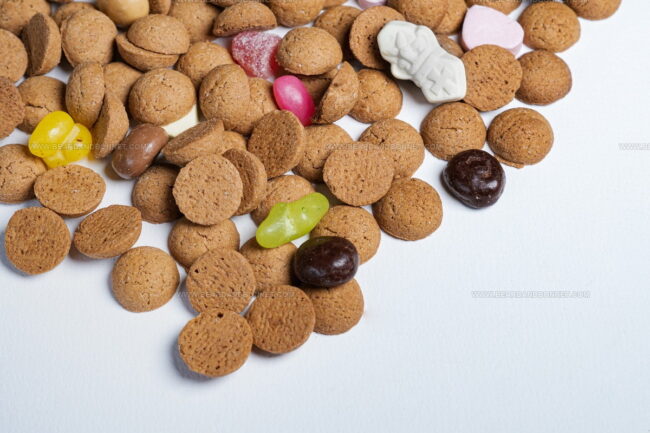
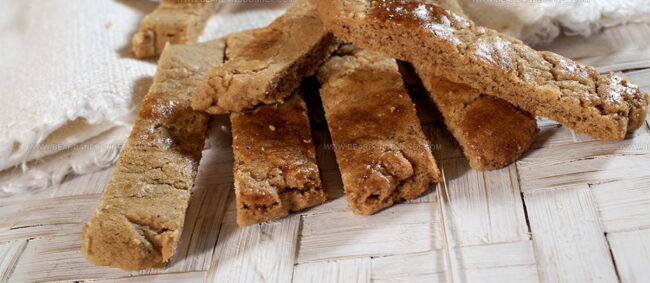
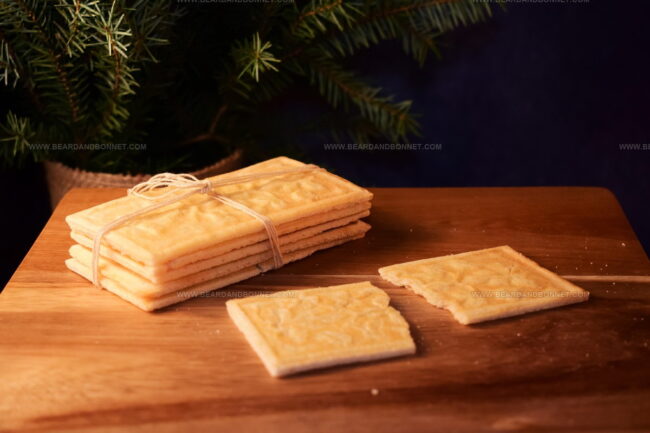
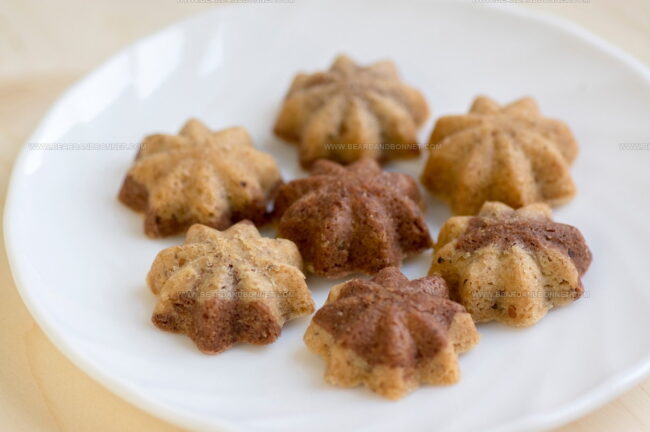
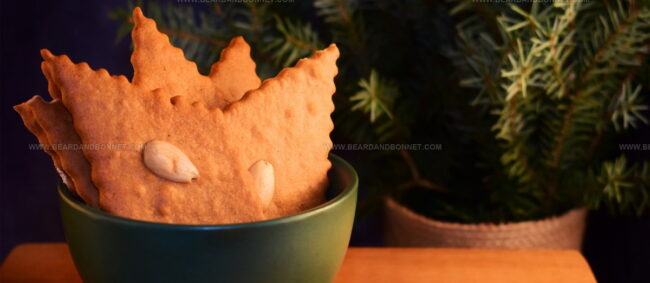
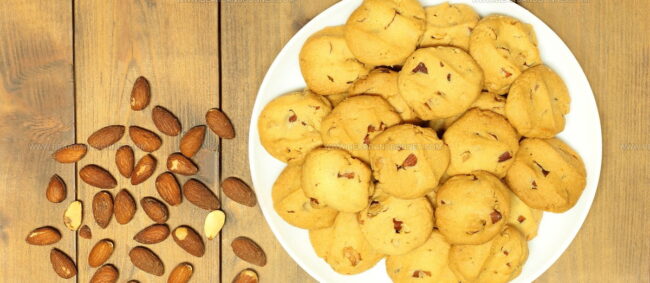
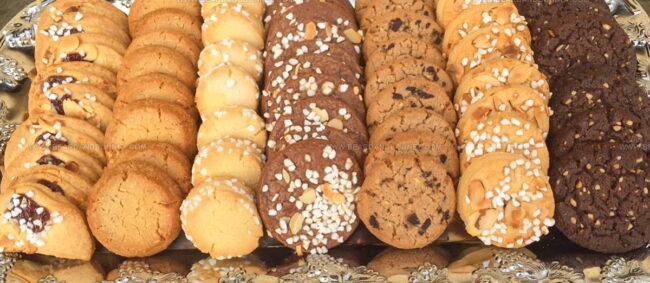
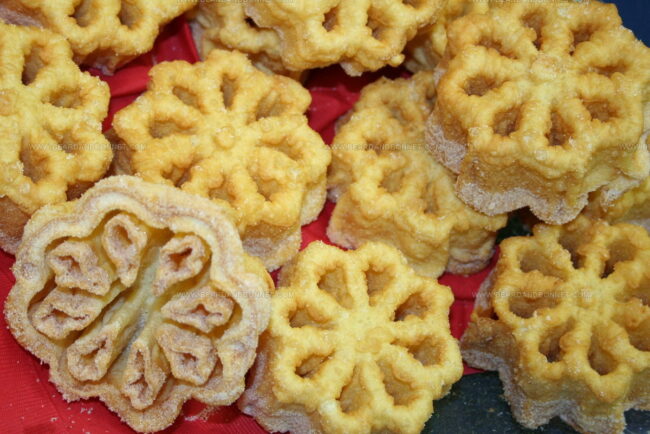
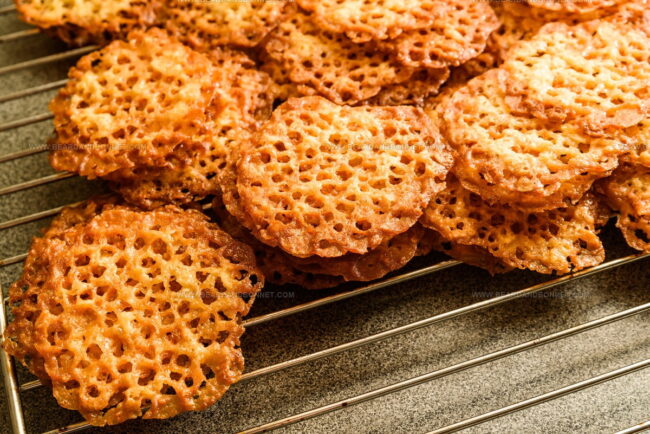
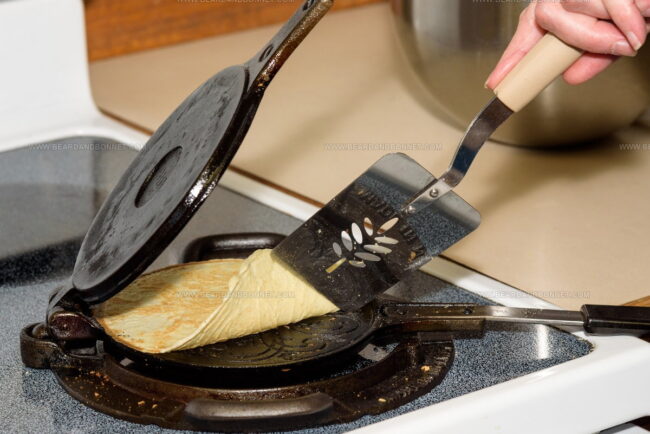
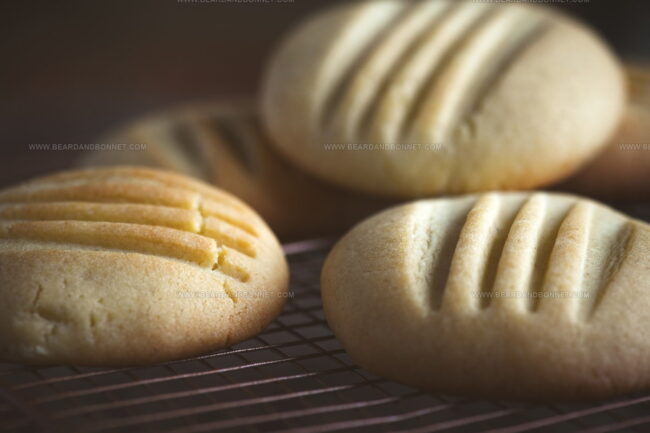
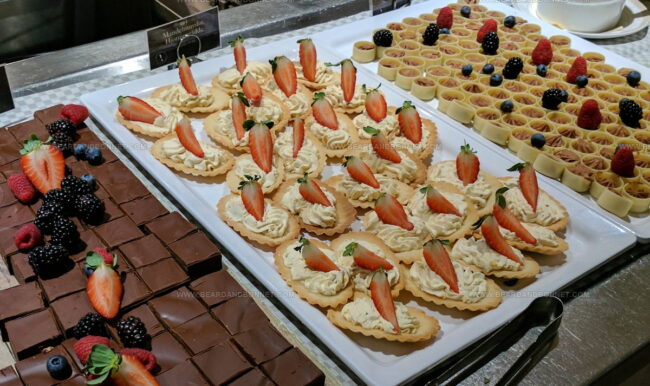
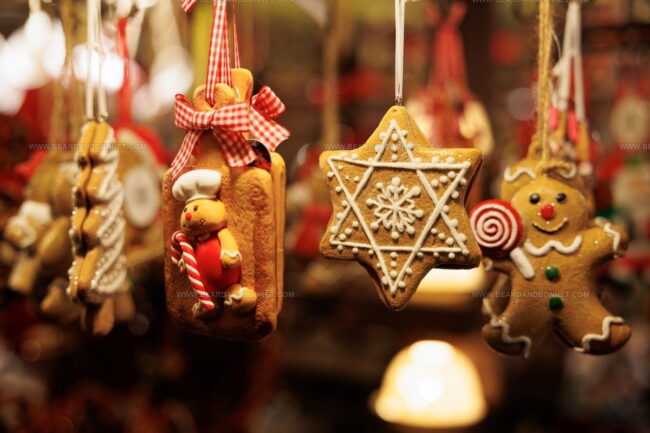
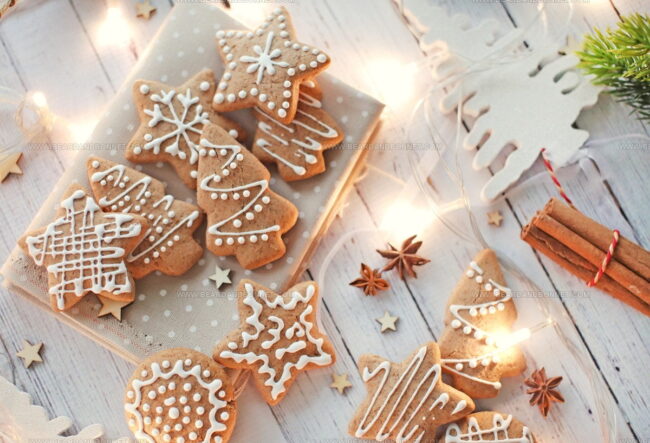
Alex Reed
Founder & Lead Content Writer
Expertise
Recipe Development and Testing, Culinary Education, Food Writing and Blogging, Sustainable Cooking Practices, Global Cuisine Exploration
Education
Johnson & Wales University
Le Cordon Bleu Paris
Alex Reed is an inventive chef and food creator with a passion for dishes that balance taste, health, and sustainability.
Trained at Portland Community College and holding an Advanced Pastry Arts certificate from Oregon Culinary Institute, Alex brings more than 10 years of practical culinary experience to every recipe he develops.
His background uniquely blends traditional cooking skills with modern, mindful eating principles. As the founder of Beard and Bonnet, Alex creates recipes that encourage readers to cook confidently.